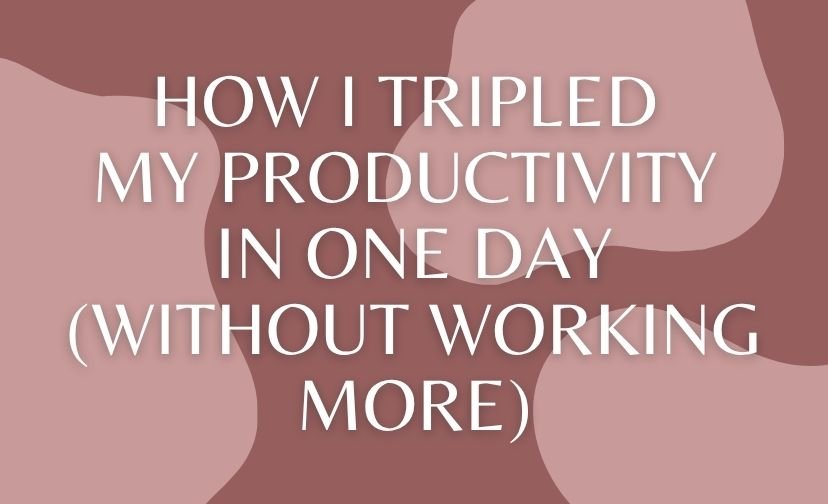Imagine waking up each day with the freedom to design your work hours, aligning them perfectly with your rhythm. A flexible work schedule offers this enticing possibility, allowing you to blend work seamlessly with life.
But what does it indeed mean to have such a schedule, and how can it transform your productivity while enhancing your work-life balance? This guide unveils the secrets to crafting a schedule that boosts efficiency and allows you to enjoy life to the fullest.
Understanding the Flexible Work Schedule
In today’s fast-paced world, a flexible work schedule is gaining traction as more individuals seek autonomy over their time. But what exactly does it entail, and how can it be implemented effectively?
What is a Flexible Work Schedule?
A flexible work schedule allows employees to vary their working hours outside the traditional nine-to-five framework. It will enable customizing start and end times, adapting to personal needs, and maximizing productivity during peak periods.
This flexibility can manifest in various forms, such as compressed workweeks, remote work options, or adjustable daily hours. By breaking free from rigid schedules, individuals can align their work tasks with their most energetic and creative times, enhancing productivity and job satisfaction.
Consider starting your flexible work schedule by identifying non-negotiable tasks. These are duties that must be completed regardless of the time frame.
Once identified, you can plan around these tasks, ensuring they are tackled during your peak productivity hours. This approach helps maintain essential work commitments while enjoying the benefits of flexibility.

Benefits of a Flexible Work Schedule
The advantages of a flexible work schedule extend beyond mere convenience. For one, it significantly boosts work-life balance, allowing individuals to attend to personal matters without compromising their professional responsibilities.
Additionally, it fosters a sense of autonomy, leading to higher motivation and job satisfaction. Employees often experience reduced stress levels, as they can avoid peak-hour commutes and tailor their work environment to their preferences.
Moreover, businesses benefit from increased employee retention and reduced absenteeism, making it a win-win scenario for all parties involved.
Common Misconceptions About Flexible Work Schedules
Despite its benefits, some misconceptions persist about flexible work schedules. One common myth is that they lead to decreased productivity due to a lack of structure.
However, studies show that when employees have control over their schedules, they tend to be more productive, as they can work during their most efficient hours. Another misconception is that they’re only suitable for specific industries or roles.
In reality, with technological advancements, many jobs can be adapted to support flexible arrangements, breaking the traditional boundaries of office-based work.

Crafting Your Ideal Work Schedule
Creating a flexible work schedule tailored to your lifestyle requires introspection and strategic planning. It’s not just about shifting hours; it’s about optimizing your time to achieve personal and professional goals.
Assessing Your Current Schedule
Before diving into a new schedule, take a moment to reflect on your current routine. Identify tasks that consume the most time and evaluate their necessity. Are there meetings that could be condensed or functions that could be delegated? You can pinpoint areas ripe for improvement by understanding where your time goes.
This self-assessment lays the groundwork for crafting a schedule that aligns with your priorities and frees up valuable time for personal pursuits.
Use a time-tracking app for a week to gain insights into your daily routine. This data will reveal patterns and help identify tasks that can be optimized or eliminated. This information lets you make informed decisions about restructuring your schedule to maximize efficiency and personal time.
Identifying Your Peak Productivity Hours
Everyone has certain times of the day when they feel most alert and productive. Recognizing these peak hours is crucial for scheduling demanding tasks.
Are you a morning person who thrives at dawn, or do you find your creative juices flowing in the late afternoon? By aligning your work tasks with these natural energy peaks, you can enhance your performance and reduce the time spent on tasks that would otherwise take longer during low-energy periods.

Incorporating Work-Life Balance into Your Schedule
Achieving a harmonious work-life balance involves more than having flexible hours; it requires planning. Ensure that your schedule includes time for leisure activities, family, and self-care.
This balance enriches your personal life and rejuvenates you for work, fostering a cycle of continuous productivity and satisfaction. Remember, the goal is not to squeeze more work into your day but to work smarter, allowing ample space for life’s pleasures.
Practical Time Management Tips for Flexibility
Time management is the cornerstone of a successful, flexible work schedule. By mastering this skill, you can unlock the full potential of your newfound freedom.
Setting Boundaries to Maximize Productivity
Establishing clear boundaries is essential when working flexibly. Work can easily bleed into personal time without them, leading to burnout. Communicate your work hours to colleagues and family members, ensuring they respect your schedule. This boundary-setting protects your time and enhances focus during work hours, as distractions are minimized.

Using Technology to Stay Organized
Technology is a powerful ally in maintaining an organized schedule. Utilize digital tools like calendar apps, task managers, and project management software to streamline your workflow.
These tools help keep track of deadlines, set reminders, and prioritize tasks, ensuring that nothing falls through the cracks. By leveraging technology, you can efficiently manage your time and stay on top of your responsibilities, even when your schedule varies.
| Tool | Purpose | Benefit |
|---|---|---|
| Google Calendar | Scheduling | Visualize your day, set reminders |
| Trello | Task Management | Visualize your day, set reminders |
| Slack | Communication | Stay connected with team members |
Implementing Productivity Hacks for Success
With a flexible work schedule, productivity hacks can further enhance your efficiency and ensure you make the most of your time.
The Pomodoro Technique: A Game Changer
The Pomodoro Technique is a time management method that involves breaking work into intervals, typically 25 minutes long, followed by short breaks. This approach capitalizes on the human attention span, preventing burnout and maintaining high concentration levels. By focusing intensely for short bursts, you can accomplish more in less time, leaving you with extra hours for personal endeavours.

Batch Processing Tasks for Efficiency
Batch processing involves grouping similar tasks and completing them in a dedicated block of time. This method reduces the mental load associated with switching between different types of tasks, increasing efficiency.
For instance, dedicate one morning to responding to emails and another afternoon to creative work. By organizing functions this way, you can maintain a steady workflow and avoid the scatterbrained feeling that often accompanies multitasking.
Experiment with different batch sizes to find what works best for you. Start with small groups of tasks and gradually increase the batch size as you become more comfortable with the process. This flexibility allows you to adapt the technique to your unique work style and maximize productivity.
Mindfulness and Breaks: Recharge to Perform Better
Incorporating mindfulness into your routine can drastically improve your work performance. Regular breaks, combined with mindfulness practices like deep breathing or short meditations, help recharge your mental batteries.
These moments of rest are crucial for maintaining focus and creativity throughout the day. By prioritizing breaks, you can sustain high productivity levels and avoid the fatigue that often comes with extended work periods.

Real-Life Stories: How Flexibility Changed Lives
Real-world experiences can offer invaluable insights into the transformative power of a flexible work schedule. Let’s explore how individuals have successfully embraced this lifestyle.
Interviews with Successful Professionals
Many successful professionals attribute their achievements to the freedom afforded by a flexible work schedule. For instance, a marketing consultant, Sarah shares how adjusting her hours allowed her to pursue a passion for painting, leading to a flourishing side business.
Meanwhile, Tom, a software developer, credits his flexible schedule for enabling him to volunteer at local community events, enriching his life beyond work. These stories highlight the profound impact of control over one’s schedule on personal fulfilment and career success.
Personal Anecdotes of Freedom and Balance
Countless individuals have found liberation in flexibility, experiencing a newfound balance between work and life. Take Emma, a freelance writer who, after adopting a flexible schedule, discovered the joy of spending afternoons hiking with her children.
Or consider James, who leveraged his flexible hours to complete a master’s degree, achieving a long-held educational goal. These anecdotes demonstrate that personal aspirations and professional responsibilities coexist harmoniously with the proper schedule.

Taking Action: Your Path to a Flexible Work Schedule
Embarking on the journey toward a flexible work schedule requires commitment and a willingness to adapt. Here’s how you can start.
Steps to Start Implementing Your New Schedule
Begin by communicating your desire for a flexible schedule with your employer, presenting the benefits and how it can enhance your performance. Next, experiment with different scheduling formats to see what suits you best, adjusting as necessary.
Gradually implement changes, allowing yourself time to adapt to the new routine. By taking these steps, you pave the way for a more balanced and fulfilling work life.
Overcoming Challenges in Transitioning
Transitioning to a flexible work schedule may be challenging, as colleagues may initially resist or find it difficult to maintain discipline. To overcome these hurdles, remain transparent about your availability and consistently deliver quality work to build trust.
Use the tools and techniques discussed earlier to stay organized and focused. With perseverance, you can navigate these obstacles and fully embrace the benefits of flexibility.
Seek support from peers who have successfully transitioned to flexible work schedules. Their insights and advice can provide guidance and reassurance during your transition. By learning from their experiences, you can anticipate potential challenges and develop strategies to address them effectively.

Encouragement to Embrace Your New Freedom
Embracing a flexible work schedule is not just about changing your hours; it’s about reclaiming your time and living on your terms. As you embark on this journey, remember that every step towards flexibility is a step towards greater freedom and fulfilment.
With dedication and the right strategies, you can craft a schedule that empowers you to thrive professionally and personally. So go ahead, take the leap, and enjoy the benefits of this new chapter of your work life.





